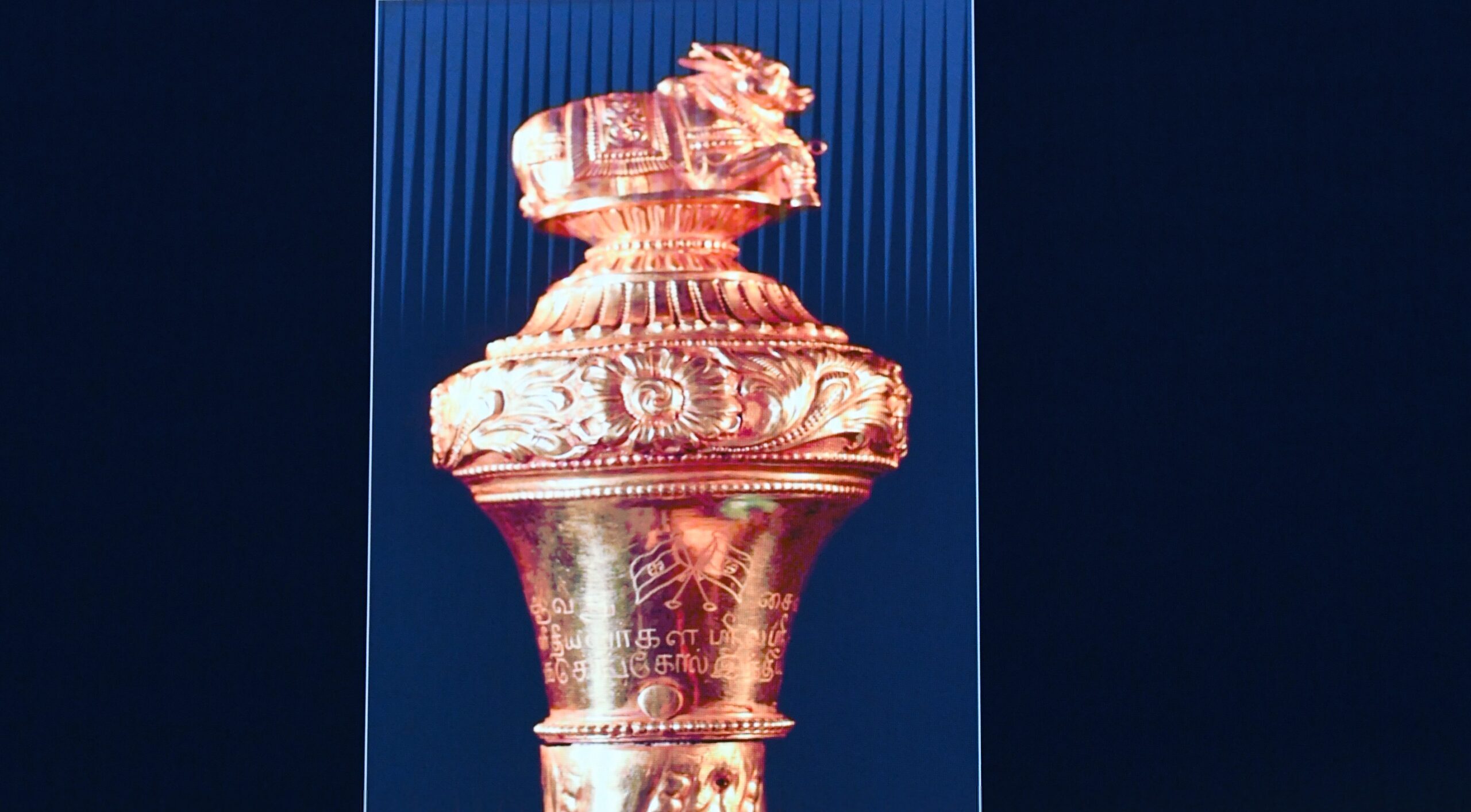


In a momentous announcement, Union Home Minister Amit Shah revealed that the historical sceptre known as ‘Sengol’, hailing from Tamil Nadu, will find its new abode in the upcoming Parliament building. The installation ceremony is scheduled to take place on May 28, with Prime Minister Narendra Modi presiding over the inauguration.
Addressing the media during a press conference, Shah emphasised the significance of ‘Sengol’ as a representation of the transfer of power from British colonial rule to an independent India. He drew parallels to its original use during the illustrious Chola dynasty in Tamil Nadu, where the sceptre denoted the transfer of power from one king to another.
Elaborating on the historical context, Shah elucidated, “The ‘Sengol’ served as a symbolic order (‘aanai’ in Tamil) for the ruler to govern with ‘dharma,’ signifying justice and fairness.” The home minister was accompanied by Information and Broadcasting Minister Anurag Singh Thakur and Culture Minister G Kishan Reddy, underscoring the collective endeavour to preserve and celebrate India’s rich cultural heritage.
Shah emphasised that the purpose of installing ‘Sengol’ in the new Parliament building is to uphold the true essence of the transfer of power, transcending mere for formalities and documents. He reiterated the importance of honouring local traditions while catering to the needs of a modern nation.
The ‘Sengol’ to be installed holds historical significance as it is the very same sceptre presented to the first Prime Minister of India, Jawaharlal Nehru, by the British as a tangible representation of the transfer of power. On August 14, 1947, Nehru, accompanied by prominent leaders including Rajendra Prasad, who later became India’s first President, received the ‘Sengol’ in a ceremonial event.
Derived from the Tamil word ‘Semmai,’ which means ‘righteousness,’ the ‘Sengol’ is an exquisite artefact made of silver, coated with gold, and adorned with the sacred Nandi, symbolising unwavering vigilance and justice. “Sengol represents the same sentiment that Jawaharlal Nehru experienced on August 14, 1947,” remarked Shah.
Highlighting Prime Minister Narendra Modi’s visionary leadership, Shah commended the new Parliament building as a testament to Modi’s vision of creating a new India that harmoniously blends modernity with the country’s rich heritage and traditions.
During the inauguration ceremony on May 28, Prime Minister Modi will also bestow recognition upon 60,000 labourers (shram yogis) for their immense contributions. This grand event will mark the dedication of the new Indian Parliament building to the nation.
Shah shared fascinating details about the ‘Sengol’ event’s historical origins, recounting a conversation between Viceroy Lord Mountbatten and Pandit Jawaharlal Nehru. Mountbatten sought Nehru’s counsel on the ceremonial procedure that would aptly symbolise the transfer of power from British to Indian hands. In response, Nehru sought guidance from veteran freedom fighter C Rajagopalachari (Rajaji).
Rajaji, drawing inspiration from the Chola dynasty’s rituals, which sanctified the transfer of power between kings and received blessings from high priests, approached the revered Dharmic Mutt in Tamil Nadu’s Tanjore district—the Thiruvavaduthurai Adheenam, a Shaivite sect. The Adheenam, with its rich heritage spanning over 500 years and 50 branch monasteries across Tamil Nadu, swiftly commissioned Jeweller Vummidi Bangaru Chetty in Chennai to create the five-foot-long ‘Sengol.’
In a heartwarming gesture, two individuals involved in crafting the original ‘Sengol,’ Vummidi Ethirajulu (96) and Vummidi Sudhakar (88), are expected to grace the inauguration of the new Parliament building. During the historic transfer of power on August 14, 1947, three emissaries from Tamil Nadu, including the Deputy High Priest of the Adheenam, the Nadaswaram player Rajarathinam Pillai, and the Oduvar (singer), arrived with the ‘Sengol.’ The priest handed over the sceptre to Lord Mountbatten, subsequently purifying it with holy water and leading a procession to Nehru’s residence, where the ‘Sengol’ was ceremoniously presented. A special song, as specified by the high priest, accompanied this momentous occasion, marking the night of August 14, 1947, in history.
Upon discovering this lesser-known historical episode, Prime Minister Modi commissioned comprehensive research, ultimately leading to the decision to install the ‘Sengol’ in the Parliament building, the epitome of Indian democracy, according to Shah.
In the grand tradition of the Chola dynasty, the handing over of the sceptre was accompanied by the rendition of a special song composed by the 7th-century Tamil saint Thirugnana Sambandar. Despite his brief life, Sambandar left an indelible mark with his composition, Kolaru Pathigam, believed to possess the power to neutralise the adverse effects caused by planetary positions. The term ‘Pathigam’ refers to a poem praising a deity, and the song concludes with the powerful words, ‘Adiyaarkal vaanil Arasaalvar aanai namadhe,’ signifying that the followers (referring to the King) shall rule justly, akin to the heavens, in accordance with their decree.
The installation of ‘Sengol’ in the new Parliament building serves as a profound testament to India’s rich heritage, its enduring democratic values, and the spirit of progress exemplified by Prime Minister Narendra Modi’s transformative vision for the nation.